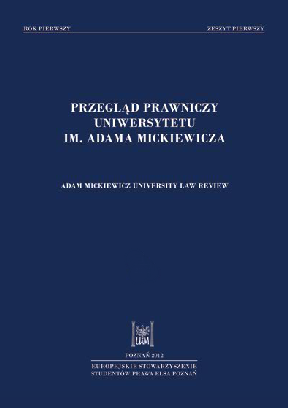Powstanie Dekretu Gracjana jako przykład żywotności prawa rzymskiego
The formation of Gratian’s Decretum as an example of the vitality of Roman law
Author(s): Piotr AlexandrowiczSubject(s): Law, Constitution, Jurisprudence, History of Law
Published by: Uniwersytet im. Adama Mickiewicza w Poznaniu
Keywords: Roman law; Canon law; Gratian’s Decretum; Gregorian reform Ius commune
Summary/Abstract: Gratian’s Decretum was one of the most significant legal collections in the history of canon law and was the foundation of canon law science. It was compiled in about 1140 as the consequence of many important factors. Firstly, the creation of Gratian’s Decretum was the result of various trends appearing in the history of canon law. Secondly, Decretum was an answer to the changes taking place in the Catholic Church in the 11th and 12th centuries. Finally, the formation of Gratian’s collection was related to the revival of Roman law: the teaching of Irnerius’s work recovered Roman law and the relations between canon and Roman law. Decretum became a sign of the vitality of Roman law and the beginning of canon law. The importance of Gratian’s work consisted in the method of proceeding with legal sources. The new method resulted from both scholars’ achievements and those of medieval Roman jurists.
Journal: Przegląd Prawniczy Uniwersytetu im. Adama Mickiewicza
- Issue Year: 2014
- Issue No: 3
- Page Range: 13-24
- Page Count: 12
- Language: Polish

